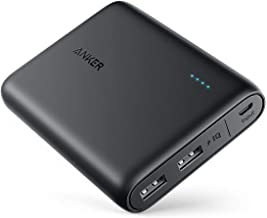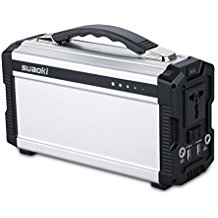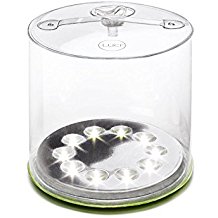Table of Contents
Getting started
Getting started it easy; it doesn't require money, skills, or fancy equipment.
the mental preparation
Vandwelling is a mental challenge more than anything else. You will be living in a way that onlookers probably will not understand and may be hostile to. You will no longer be surrounded by comforting/distressing amounts of material possessions. You will no longer have a single fixed place to call home; lacking a fixed home will confuse governments, employers, businesses, and pretty much everyone else other than RV and van dwellers.
If you are doing voluntarily vandwelling you are probably adventurous and chomping at the bit. These pages are designed to help you learn from the mistakes of others so you can make mistakes never seen before! ![]()
If you are involuntarily vandwelling you may feel shame, fear, or embarrassment. There are two things for involuntary 'dwellers to remember:
- a van is shelter when you need it (right now!). Humans have taken opportunistic shelter in places as long as we've been around. Caves, tents, trees, whatever. It's what our species does. We survive. You will survive.
- a vandwelling life is a better way of life for many people than living in a “sticks and bricks” house. Bob from Cheap RV Living, for example, started out in a van as emergency shelter after his divorce. Now he thrives in his van and has helped thousands of others to thrive, too.
stuff
Vandwelling will force you to confront your relationship to stuff, and by extension to consumer culture. You simply will not have room for stuff. It sounds scary but can be freeing.
the build
It doesn't take much to get started. There are a few reasons for this:
- it is common wisdom in the vandwelling community that it is cheapest to “start with what you got”. Have a car, or pickup, or van, or something else? Start there.
- real world testing will realign one's daydreams with reality. You can start with an overnight in your driveway, then an overnight somewhere else. Weekend in the driveway, weekend somewhere else. Maybe a weeklong jaunt.
- building a van or car out is an iterative process: do something, try it out. Change it, try it out. Rinse and repeat.
survival build
You are suddenly homeless, are outrunning a hurricane, etc.
- cellphone with charger
- car charger for cellphone, preferably one with generic USB outlets
- bedding: blanket, pad, and/or sleeping bag.
- pee bottle: wide mouth Gatorade or similar for men, widemouth jar (or https://amzn.to/2GEgBIkgo girl device + bottle) for women
- poop emergencies - kitchen sized trash bags, toilet paper, baby wipes
- toiletries - toothbrush, toothpaste, etc.
- a good can opener and the know-how to use it. Practice beforehand!
- a change of clothes or two, especially underwear and socks. If cold, a knit cap will really help keep you warm
survival + micropower
Some cars have USB outlets that are powered when the vehicle is not turned on. Others require the key to be in the accessory position, which can quickly drain the starter battery.
 The cheapest way to have a bit of power for charging and running USB loads is with a small/handheld power bank. They are small, charged from USB outlet, and can usually charge a phone or run something tiny like a personal fan. Keep the bank and charger with you all the time so you can charge it any time you see an outlet.
The cheapest way to have a bit of power for charging and running USB loads is with a small/handheld power bank. They are small, charged from USB outlet, and can usually charge a phone or run something tiny like a personal fan. Keep the bank and charger with you all the time so you can charge it any time you see an outlet.
 If you want to charge a laptop or run a CPAP, you can pick up a lithium "power station" and charge it when you stop for a sit-down meal, coffee, or anywhere else with an electrical recepticle. This type of unit charges very well from an outlet, ok from solar, and poorly from a ciggy lighter socket unless you are driving. The fancier units get expensive quickly and are heavily driven by marketing. At some point it will be cheaper to build a "real" power system.
If you want to charge a laptop or run a CPAP, you can pick up a lithium "power station" and charge it when you stop for a sit-down meal, coffee, or anywhere else with an electrical recepticle. This type of unit charges very well from an outlet, ok from solar, and poorly from a ciggy lighter socket unless you are driving. The fancier units get expensive quickly and are heavily driven by marketing. At some point it will be cheaper to build a "real" power system.
A backpack and extension cord come in handy for recharging the power stations; you can put the battery in the backpack and run the extension plug to the wall. No one needs to know you are charging a pack. The key is to charge every time you have the opportunity. Be relentless about power - you are responsible for every watt that goes in and out.
minimal build
The main difference between the survival and minimal builds is the survival build is purely temporary and the minimal build is intended for a longer term.
For a minimal build you will need the survival items above and will likely add:
- a flashlight or area light, USB rechargeable if possible
- an upgraded bed, like a cot or maybe simple bed frame. Cots can be leveled over uneven flooring using PVC sleeves.
- a camp stove or some other way to cook, lighter
- laundry detergent for the laundromat.
- a pocketknife
- cooler for chilling small items
fulltiming build
People who fulltime (ie, live in a van full time) typically add
- a separate battery system (“house power”) for running electronics. This may include charging from solar, alternator, or shore power.
- interior lighting
- a compressor refrigerator to keep food1) chilled
a literary example
In Blue Highway, the author described his functional gear like this:
I had what I needed for now, much of it stowed under the wooden bunk:
1 sleeping bag and blanket;
1 Coleman cooler…;
1 Rubbermaid basin and a plastic gallon jug (the sink);
1 Sears, Roebuck portable toilet;
1 Optimus 8R white gas cook stove (hardly bigger than a can of beans);
1 knapsack of utensils, a pot, a skillet;
1 U.S. Navy seabag of clothes;
1 tool kit…


